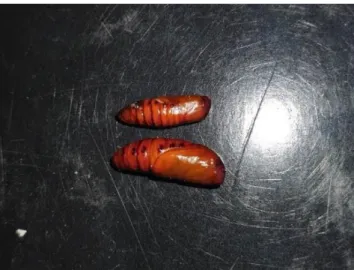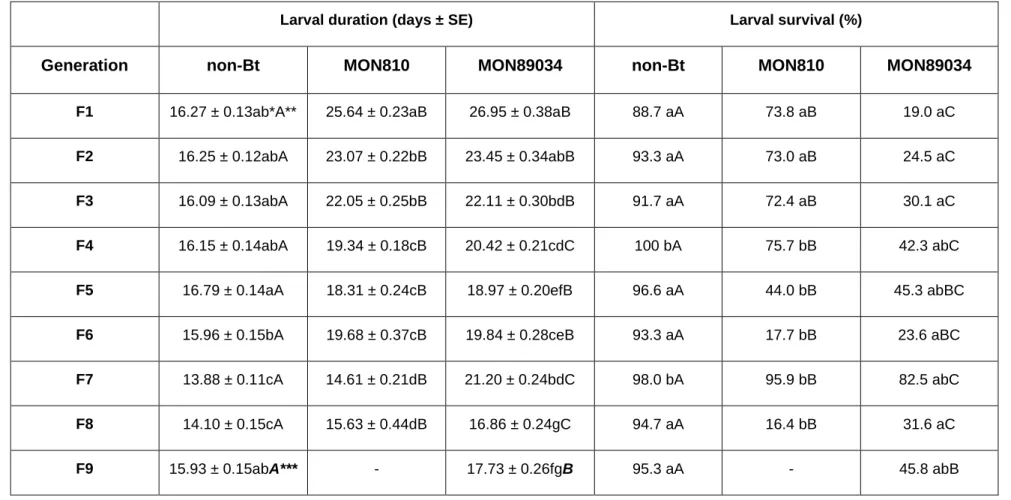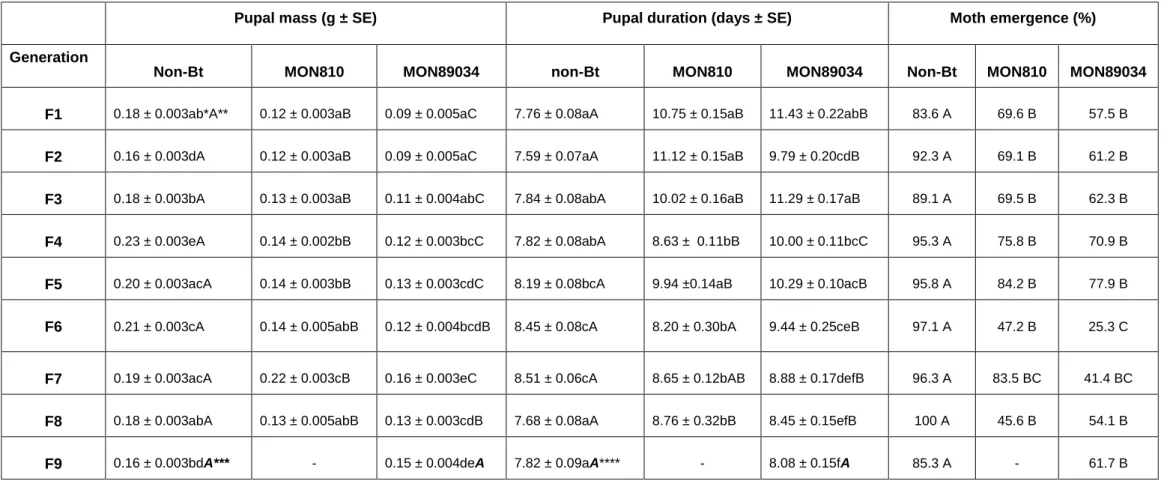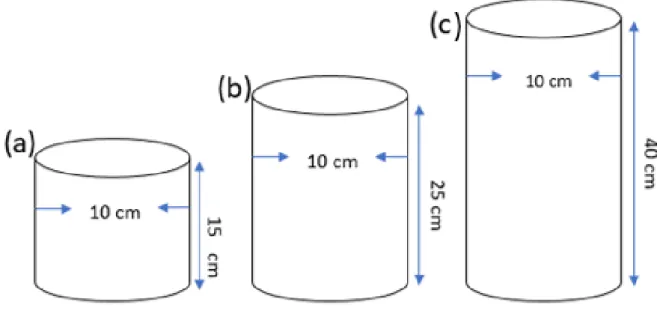In America, genetically modified Bt corn is used as a control strategy to control this pest. Pupal mass was lower and pupal period duration was longer in groups exposed to Bt corn.
Introduction
When present in large numbers in crop fields, they can cause significant damage to crops such as maize, rice and sugarcane (Overton et al., 2021), which in turn results in yield loss and threatens food security, especially in developing countries (Bortolotto et al.) ., 2016). Over-reliance on insecticide spraying has been shown to be ineffective and unreliable, as it has increased the prevalence of pesticide resistance among FAW populations worldwide (Gutiérrez-Moreno et al. 2016).
Distribution of Spodoptera frugiperda
West and Central Africa was reported in early 2016, where FAW became an invasive species and the latest threat to cereal production on the African continent (Goergen et al., 2016; Du Plessis et al., 2018). The theory that there were multiple introductions of FAW on the African continent is strongly supported by two very different haplotypes occurring in samples collected from different locations in West and Central Africa (Goergen et al., 2016; Nagoshi et al.
Lifecycle
Once the larvae hatch, migration takes place by crawling or ballooning, where the larvae spin a silk thread that allows them to drop from plants (Visser et al., 2020). FAW moths are also attracted to light that emits strong ultraviolet components (Abrahams et al., 2017).
Control of FAW
Natural enemies of pests can be found in the immediate surrounding environment, or, if these types of populations are absent in the environment where pest populations occur, biological control agents can be introduced into an area (Stern et al., 1959). Chemical control usually produces immediate results, resulting in only temporary relief or control of pest populations (Stern et al., 1959).
Evolution of resistance to insecticides
In addition, studies conducted by Abang et al. 2021) found that Telenomus remus (Nixon) (Hymenoptera: Platygastridae) and Trichogramma spp. According to Tabashnik (2014), the development of resistance in pest populations is rapidly becoming a global agricultural problem and a threat to human health (Tabashnik et al., 2014).
Host plant resistance
This is because Bt maize plants usually contain a single gene encoding insecticidal proteins with a high success rate in controlling pest populations (Prasanna et al., 2018). Breeding for HPR is therefore an ongoing process, which sees a never-ending race between the evolution of host plants and pest populations (Prasanna et al., 2018).
Genetically modified crops
However, in laboratory experiments, preference, acceptance and growth of FAW varied significantly between cultivars, indicating the potential for identifying resistance traits of native host plants (Morales et al., 2021). Genetic modification allows plants and organisms to exhibit phenotypic or physiological properties that were not present before the genetic modification occurred (Okigbo et al., 2011).
Introduction to Bt maize
The target pests of Bt maize in South Africa are Busseola fusca (Fuller) (Lepidoptera: Noctuidae), Chilo partellus (Swinhoe) (Lepidoptera: Pyralidae) and Sesamia calamistis (Hampson) (Lepidoptera: Noctuidae) (Van Rensburg, 1999; Van Wyk et al. ., 2009). Although Bt maize can provide effective control of FAW (Botha et al. 2019), there is no registered Bt maize event to control this pest in South Africa.
Resistance evolution to Bt maize
According to Santos-Amaya et al. 2015), resistance to pyramidal maize cultivars was found to be “recessive, incomplete and autosomal”, with no evidence of cross-resistance with the Vip3A gene and no maternal effects. However, it is important to note that selection for resistance to Cry1A.105 + Cry2Ab reduced the effectiveness of Cry1Fa, indicating cross-resistance (Santos-Amaya et al., 2015).
Insect resistance and Insect Resistance Management
High dose and refuge strategy
It is important to keep these values in mind when developing strategies for the establishment of refuges (Vilarinho et al., 2011). It is therefore important to study the behavior and fitness parameters of FAW larvae that have developed on Bt maize (Visser et al., 2020).
Fitness costs associated with resistance
In addition, there was also a decrease in survival and the number of stages completed by larvae. Research conducted by Barros et al. 2020) on the effects of insecticides on the development and flight performance of Chloridea virescens (Fabricius) (Lepidoptera: Noctuidae) (tobacco budworm), found that there was not only an increase in the mean duration of larvae and pupae , but also a decrease in the overall flight performance of moths.
Cross-resistance between different Cry proteins in FAW
Rapid cooling is a standard procedure used in sterile insect technique (SIT) to immobilize moths. Plutellidae) (diamond moth) was studied by Gou et al. 2013), and the results showed an increase in larval development time, a decrease in the weight of young, a decrease in fecundity in adults and also a decrease in the percentage of hatched eggs.
Resistance of FAW under laboratory conditions
However, studies conducted by Yang (2017) to assess the possible presence of cross-resistance between Cry2Ab2 and several other Bt proteins did not detect cross-resistance between FAW populations selected with Cry2Ab2 maize and the Cry1F, Cry1A.105, and Vip3A, as well as maize plants expressing either of these proteins.
Comparative behavioural responses of target pests to Bt and non-Bt crops
First detection report of the Fall armyworm Spodoptera frugiperda (Lepidoptera: Noctuidae) on maize in Myanmar. Evaluation of African maize cultivars for resistance to fall armyworm Spodoptera frugiperda (J. E. Smith) (Lepidoptera: Noctuidae) larvae.
Introduction
Results obtained in a study conducted by Groeters et al. 1994), showed a difference in fitness components when life history parameters of a Bt-resistant population of diamondback moth (Plutella xylostella) (L.) (Lepidoptera: Plutellidae) were compared with those of a susceptible population. The effect of Bt toxins on the fitness of individuals within a FAW population can be better explained and understood by comparing biology and life cycles of Bt-resistant and susceptible populations (Jakka et al., 2014). Comparison of the larval development time, pupal weight and duration, pupal emergence success, moth flight ability, fecundity and fecundity of susceptible and Bt-resistant populations shows that changes in fitness of individuals play a major role in the evolution of resistance (Jakka et al. ., 2014).
Materials and methods
- Maize
- Insects
- Statistical analysis
After pupation of the larvae of the field-collected populations, the pupae were kept in small plastic containers 5 cm high and 3 cm in diameter. The parental (field-collected) populations of each of the two different populations were maintained separately according to the two localities in which the collections were made. Student's t -tests were performed where life history parameters were compared only between the two feeding groups.
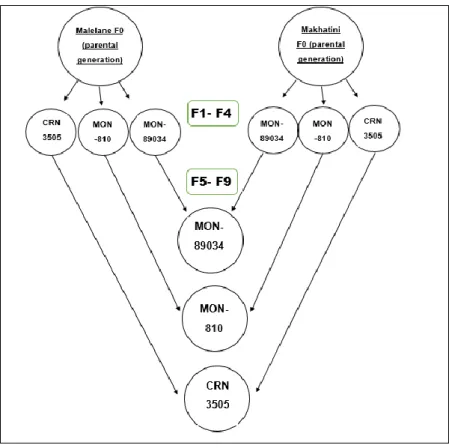
Results
Mean (± SE) larval and pupal duration periods and pupal weight of respective feeding groups after 9 generations of rearing on non-Bt maize and two Bt maize cultivars. Pupae mass was significantly greater in the non-Bt corn feeding group compared to the two Bt corn cultivars, and MON89034 mass was also significantly lower for almost all generations. Percent moth occurrence for the population grown on non-Bt corn remained relatively similar over the duration of the study.

Discussion
The mean pupal mass of the two Bt maize feeding groups was significantly lower than that of all generations of the non-Bt maize feeding group. Average pupal duration of the MON810 and MON89034 feeding groups was longer than that of the non-Bt feeding group for almost all generations. These larval survival rates reported by Sousa et al. 2016) are similar to the ranges of survival observed in the MON810 feeding group during this study.
Conclusion
Characterization of field-evolved resistance to Bacillus thuringiensis-derived Cry1F δ-endotoxin in Spodoptera frugiperda populations from Argentina. Fitness costs associated with field-evolved resistance to Bt maize in Spodoptera frugiperda (Lepidoptera: . Noctuidae). Fitness costs of resistance to Bacillus thuringiensis in velvet bean caterpillar Anticarsia gemmatalis (Hübner) (Lepidoptera, Noctuidae).
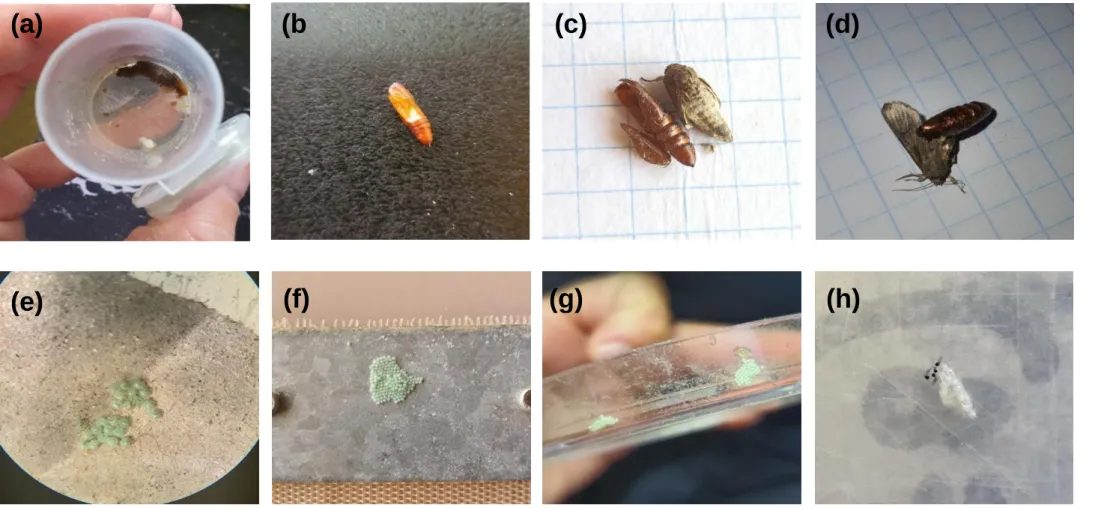
Introduction
The longevity and sustainability of Bt maize expressing insecticidal Bt proteins is threatened by the development of resistance in target pest species (Tabashnik et al., 2013). In the last decade, several species of lubadar have developed resistance to Cry proteins (Tabashnik et al., 2013). A study conducted by Liang et al. 2007) showed that the ability to fly can be affected by the presence of Cry proteins in the host plant larva.
Materials and methods
- Larval preference bioassays
- Flight ability tests
- Statistical analysis
For the two-choice tests, two pieces of maize leaf tissue from different cultivars were placed on the outer perimeter of a petri dish and the neonate larvae were placed in the center of the petri dish (Figure 3.1 (b)). All female moths produced in each generation from each of the three feeding groups were subjected to flight ability tests. The number of moths that were able to fly from each of the cylinders was recorded and the relative sizes determined.
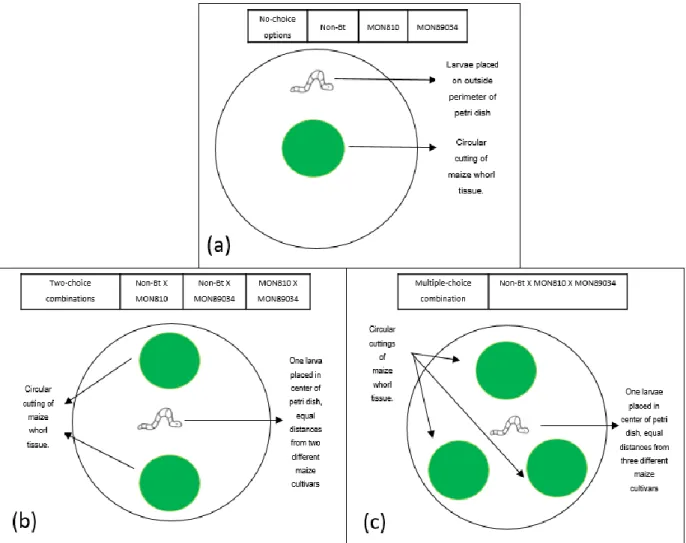
Results
A significantly higher proportion of larvae in the MON89034 feeding group settled on non-Bt maize leaf tissue than on MON89034 leaf tissue (Figure 3.7a). Comparison of the proportions of larvae in the MON89034 feeding group showed that significantly higher numbers settled on non-Bt maize leaf tissue and MON810/MON89034 leaf tissue (Figure 3.8). The preference of newly hatched Spodoptera frugiperda larvae from the non-Bt, MON810 and MON89034 feeding groups in multiple-choice tests with (a) non-Bt, (b) MON810 and (c) MON89034 maize leaf tissue after 24 h.
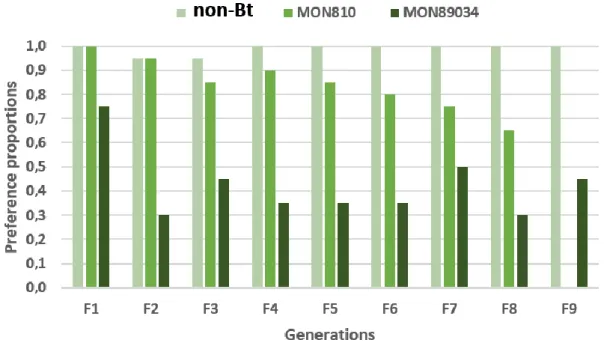
Discussion
Significant differences in preferences were observed in larvae from the MON89034 feeding group for non-Bt corn in two-choice tests. In subsequent generations, most larvae preferred to settle on non-Bt maize varieties. No significant changes in flight ability were observed in moths of the non-Bt-fed group over nine generations.
Conclusion
Overall, there was no improvement or deterioration in flight performance of moths from the MON810 and MON89034 feeding groups in successive generations. However, flight performance of moths in the MON89034 feeding groups was lower than that of the other groups, from the F2 generation onwards. However, results from this study indicate that exposure to Bt toxins drastically affects moth flight ability.
- Introduction
- IRM
- Discussion of issues regarding low dose events
- Cross resistance
- Concurrent planting
- Future recommendations
Rates of resistance evolution to Bt technologies have increased rapidly due to worldwide adoption (Zhu et al., 2019). According to Botha et al. 2019), results from their studies showed complete susceptibility (100% mortality) of FAW to a maize event expressing Cry1A.105 +Cry2Ab2. According to Zhao et al. 2005) pyramidal maize cultivars produce two or more different Bt toxins, e.g.
